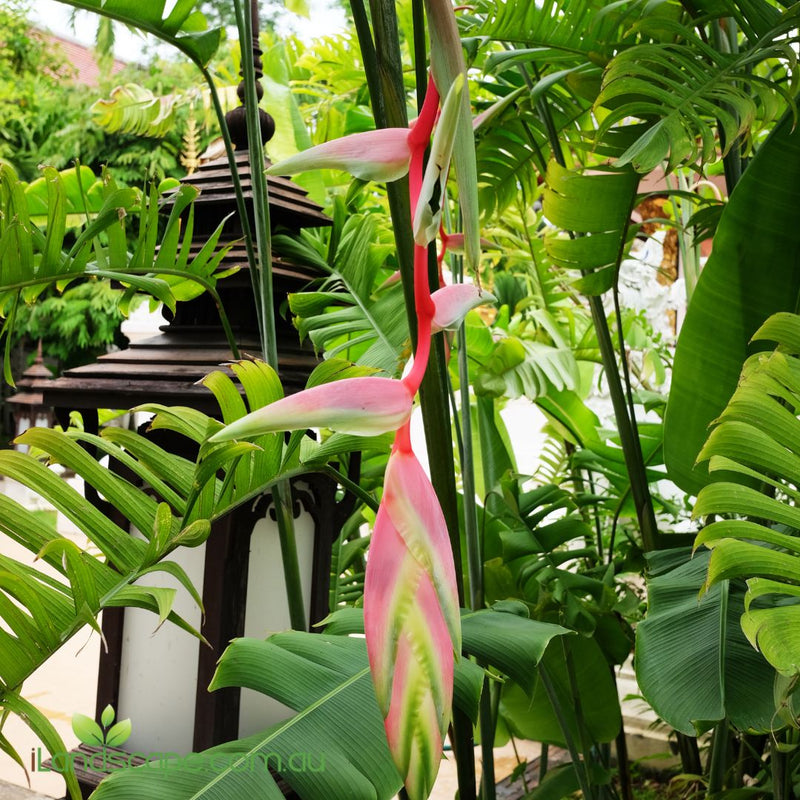Jacaranda Mimosafolia - Purple flowers
Description:Jacaranda mimosifolia, commonly known as Jacaranda, is a striking deciduous tree known for its spectacular display of purple-blue flowers in spring and summer. With its broad, spreading canopy and fern-like foliage, it is a favorite feature tree in warm-climate gardens. Native to South America, this tree is widely grown in urban landscapes, parks, and streetscapes for its ornamental beauty. Its graceful form and vibrant floral display make it an iconic tree in subtropical and tropical regions.
Flowers:In late spring to early summer, Jacaranda mimosifolia bursts into bloom with clusters of tubular, lavender-blue flowers that cover the branches. These flowers form a stunning, showy display, carpeting the ground in a sea of purple as they fall. The blooms are lightly fragrant and attract pollinators like bees.
Foliage:The leaves are bright green and feathery, composed of multiple small leaflets, giving the tree a soft, airy appearance. During the cooler months, the tree is semi-deciduous, shedding its leaves in winter. The delicate foliage creates a light shade, making it ideal for planting over lawns or garden beds where filtered sunlight is needed.
Fruit:Following the flowering period, flat, woody seed pods form. These pods are round, brown, and hard, resembling small discs. Though not particularly ornamental, they add interest and persist on the tree after the flowers have fallen.
Form and Size:Jacaranda mimosifolia has a broad, spreading canopy with an open, vase-like form. It typically reaches a height of 10-15 meters, with a similar spread. The tree develops an attractive, gnarled trunk as it matures, adding character to its overall appearance. Its graceful, arching branches make it an excellent choice for providing dappled shade.
Growing Conditions:This tree thrives in full sun and prefers well-drained soil. It is adaptable to a range of soil types, including sandy and loamy soils. Jacaranda mimosifolia is drought-tolerant once established but appreciates regular watering during prolonged dry periods, particularly when young. It is frost-sensitive, so it is best suited to warmer climates or protected areas in cooler regions.
Uses:Jacaranda mimosifolia is ideal as a feature tree in large gardens or public spaces where its floral display can be fully appreciated. Its spreading canopy provides shade, making it suitable for parks, streetscapes, or planted over garden seating areas. The tree's flowers create a striking visual impact when planted in rows or as a focal point in landscape designs.
Maintenance:Relatively low-maintenance, this tree benefits from occasional pruning to remove dead wood and maintain a balanced shape. Water deeply when establishing young trees, and mulch around the base to conserve moisture. Fertilize in spring with a balanced fertilizer to promote healthy growth and flowering.
Notes:The Jacaranda is iconic in many warm-climate cities worldwide, celebrated for its vibrant spring blooms. While it is stunning when in flower, the fallen petals can be slippery on footpaths, so this should be considered when planting near walkways or driveways. In some regions, Jacaranda mimosifolia is considered invasive, so it's important to check local guidelines before planting.
Companion Plants:Pairs well with other subtropical and Mediterranean plants such as Bougainvillea, Agapanthus, and Callistemon. Its light, filtered shade makes it an ideal companion for underplanting with shrubs like Lavender and Roses.
Common Name: JacarandaBotanical Name: Jacaranda mimosifoliaFamily: BignoniaceaeOrigin: South America
